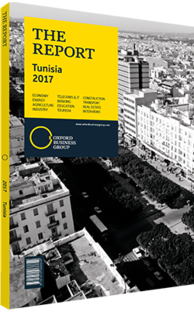Tunisia to address risk and secure new phosphate production
Tunisia has extensive experience in phosphate mining and fertiliser production, as the country’s first mines opened in the late 19th century. Tunisia relies on substantial reserves of phosphate rock, which is estimated at 900m tonnes and regulated by the National Office of Mines. As its stands, phosphate accounts for 2% of Tunisia’s GDP and employs about 27,000 people. In recent years, production has sharply declined due to recurring labour disputes, but the sector may see revived growth with the implementation of new public sector reforms (see Economy chapter).
Phosphate Production
Phosphate mining is exclusively performed by Gafsa Phosphates (Compagnie des Phosphates de Gafsa, CPG), a government-owned company that operates eight open-cast mines and runs 11 phosphate rock-washing plants. Over the past six years, phosphate production has been undermined by repeated strikes and lingering social tensions, falling from 8.2m tonnes in 2010 to an average of 3m tonnes in 2011-15. According to preliminary data from CPG, production picked up to 3.6m tonnes of commercial phosphate in 2016, 40% below initial predictions due in some part to protests in the second quarter of 2016.
To increase phosphate mining, the authorities are conducting feasibility and technical studies for a new mine in Sra Ouertane. The site is estimated to contain large reserves of phosphate – although low in phosphorus – which would require enrichment processes and a particularly high level of investment.
Fertilisers
About 90% of Tunisia’s phosphate rock is used domestically to manufacture fertiliser and phosphate-based products. The sector is dominated by two major firms, including the Tunisian Chemical Group (Groupe Chimique Tunisien, GCT), a state-owned company that merged with CPG in 1996 and produces phosphate-based fertilisers via four industrial sites.
To increase fertiliser capacity, GCT is currently building a new trisodium phosphate (TSP) production plant in M’dhilla. Estimated to cost TD120m (€51.5m), the facility will have the capacity to manufacture 800, 000-1m tonnes of TSP per annum, with most of the output intended for Bangladesh, Iran and Brazil. Scheduled for completion in 2018, the project is co-funded by the Arab Fund for Economic and Social Development and the European Investment Bank.
The sector’s other primary player is Tunisian Indian Fertilisers, a joint venture between CPG (35% share), GCT (35%), India’s Coromandel International (15%), and Gujarat State Fertilisers and Chemicals (15%). Tunisian Indian Fertilisers runs a phosphoric acid production plant in Skhira with a capacity of 360,000 tonnes per annum, and all production is exported to India as part of a long-term purchasing agreement.
Exports
After several years of low export volumes, the performance of phosphate and derivatives has picked up. Exports improved by 29.1% in 2016, driven by sales of phosphoric acid rising from TD320.8m (€137.6m) to TD498.5m (€213.8m). Global demand is strong, especially from India, which continues to be Tunisia’s largest export outlet by absorbing more than 50% of the country’s phosphate derivatives.
Despite the growth in production and exports in 2016, the Tunisian phosphate sector is under pressure to maintain its competitiveness in a landscape with more international players. Between 2011 and 2015, the sector’s labour force doubled from 13,000 to 27,000 workers and total payroll rose from TD273m (€117.1m) to TD500m (€214.4m). As a result, the price of a tonne of phosphate in Tunisia soared from $30 in 2010 to $70 in 2015, while global phosphate prices have dropped to $70-75 with the rise of new players such as Saudi Arabia.
To meet demand, the authorities are planning to recruit 4000 additional workers to CPG and GCT by 2018, and initiate new regional development programmes amounting to TD120m (€51.5m). If not implemented, Tunisia is at risk of production costs progressively outstripping global prices and losing a significant share of the international market.
You have reached the limit of premium articles you can view for free.
Choose from the options below to purchase print or digital editions of our Reports. You can also purchase a website subscription giving you unlimited access to all of our Reports online for 12 months.
If you have already purchased this Report or have a website subscription, please login to continue.

